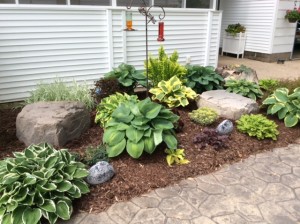In our business, a sure sign that summer is on its way begins this time of year — homeowners start receiving notice that their septic system is due for it’s regular pumping and maintenance. (Here in Wisconsin, each county requires systems to be pumped and visually inspected at least once every 3 years.) That means a lot of our day is spent on the phone with our customers, scheduling their system’s pumping and answering any questions they have.
One of the most commonly-asked questions is this… “Do I have to be home when you come to pump?” It’s a great question that plays a big part in the scheduling process. The short answer is: no, not usually.
Why not? Because for this kind of service (emptying the tank(s), cleaning the filter, visually inspecting the tank(s) and drainfield, etc), the access that our technician needs is outside. We will therefore ask for the homeowner to make sure the covers are accessible and to provide a garden hose for cleaning the filter, if applicable. But beyond that, the technician doesn’t generally need much else from the homeowner. When he’s done with that service, he’ll leave an invoice in the door (unless the customer specifies otherwise) and then be on his way. This is great news for the homeowner, since he/she doesn’t need to block out part of the day to run home and wait for our technician.
That being said, we perfectly understand if a customer would like to be home when our technician arrives and we will do our best to schedule accordingly. — And as a reminder, this is mainly just for routine maintenance. When a homeowner calls and needs quick service due to issues with their system, we often want the homeowner to be present so the technician has access to the house if needed and to be able to answer the customer’s questions right away.
So if you are one of the many who is about to schedule a pumping for your septic system, keep these points in mind. And don’t be afraid to bring up any questions you may have when you give your local pumper a call.


